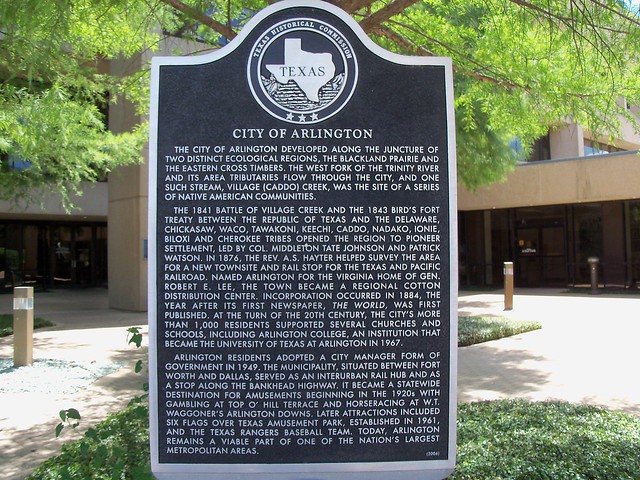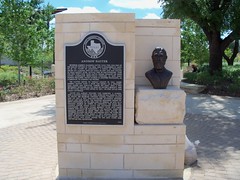City of Arlington. The city of Arlington developed along the juncture of two distinct ecological regions, the Blackland Prairie and the Eastern Cross Timbers. The West Fork of the Trinity River and its area tributaries flow through the city, and one such stream, Village (Caddo) Creek, was the site of a series of Native American communities. The 1841 Battle of Village Creek and the 1843 Bird's Fort Treaty between the Republic of Texas and the Delaware, Chickasaw, Waco, Tawakoni, Keechi, Caddo, Nadako, Ionie, Biloxi and Cherokee tribes opened the region to pioneer settlement, led by Col. Middleton Tate Johnson and Patrick Watson. In 1876, the Rev. A. S. Hayter helped survey the area for a new townsite and rail stop for the Texas and Pacific Railroad. Named Arlington for the Virginia home of Gen. Robert E. Lee, the town became a regional cotton distribution center. Incorporation occurred in 1884, the year after its first newspaper, The World, was first published. At the turn of the 20th century, the city's more than 1,000 residents supported several churches and schools, including Arlington College, an institution that became the University of Texas at Arlington in 1967. Arlington residents adopted a city manager form of government in 1949. The municipality, situated between Fort Worth and Dallas, served as an interurban rail hub and as a stop along the Bankhead Highway. It became a statewide destination for amusements beginning in the 1920s with gambling at Top O'Hill Terrace and horseracing at W.T. Waggoner's Arlington Downs. Later attractions included Six Flags Over Texas amusement park, established in 1961, and the Texas Rangers baseball team. Today, Arlington remains a viable part of one of the nation's largest metropolitan areas. (2006) #13792
by Texas Historical Commission #13792 of the Texas Historical Marker series
Colour: black
Wikimedia:
Flickr:



